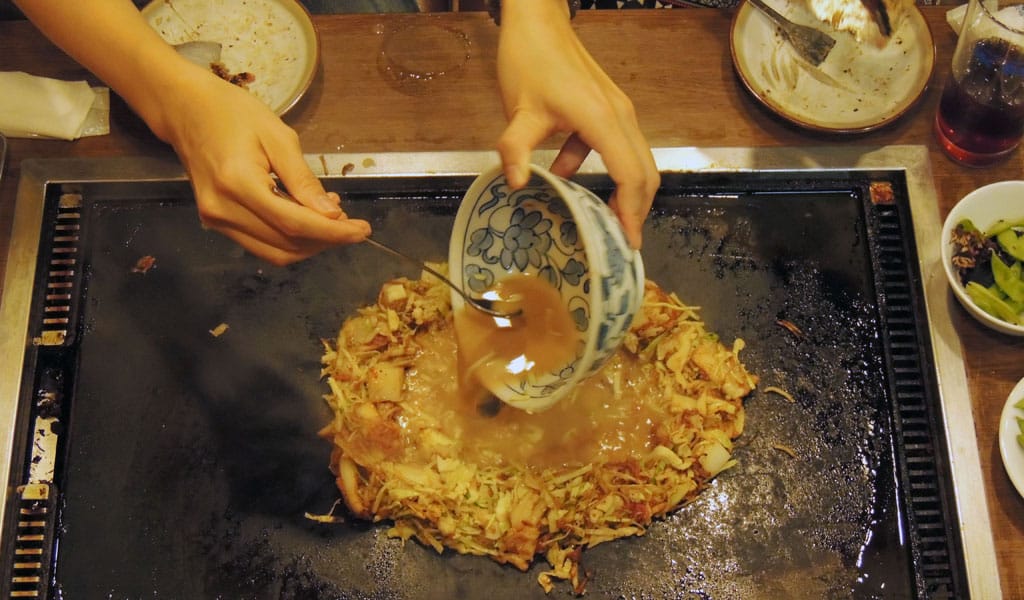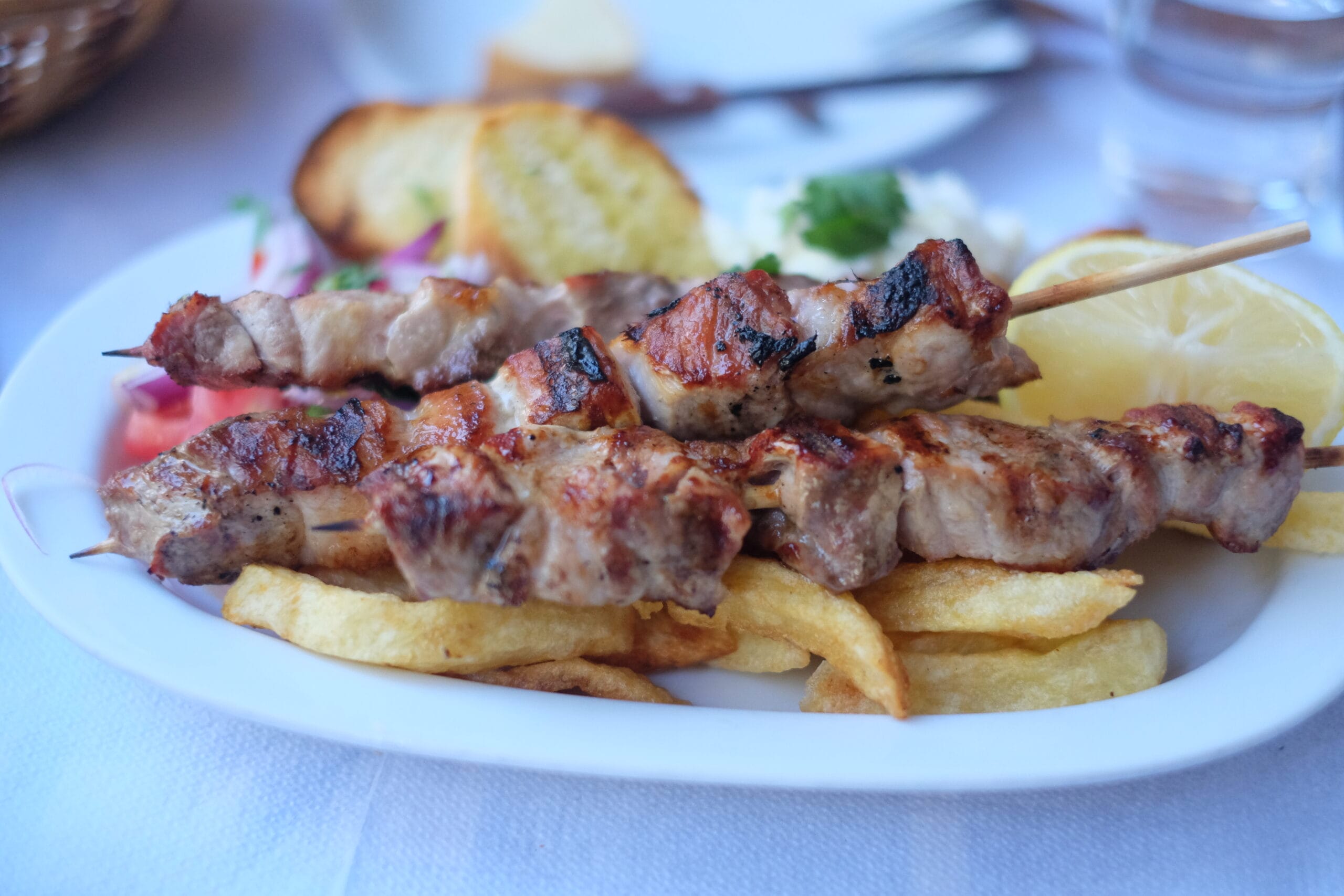Japan is well known for its variety of national dishes, as well as local specialties claimed by individual regions and cities. Tokyo, which boasts more Michelin stars than any city in the world, is a natural nexus for these disparate eats, as well as more international fare.
It may come as a surprise, then, that Tokyo itself only really has one true homegrown specialty: monjayaki. The baseline ingredients for monjayaki, often referred to simply as monja, are nothing more than wheat flour and dashi, that ubiquitous Japanese broth made from kombu (kelp) and shavings of katsuobushi, dried, fermented and smoked skipjack tuna. Cabbage is also common enough to be considered a third basic ingredient.
The spartan dish became popular in postwar Tokyo when many ingredients were scarce and city dwellers had to make do with what was at hand and additional ingredients were added when they could be had. Over the decades monja has developed a proud and proletarian flare. The bayside neighborhood of Tsukushima, where more than a hundred monja restaurants vie for supremacy, is ground zero for monjayaki. Despite the basic recipe’s seeming redundancy, monja’s potential is limited only by what one can imagine adding to the simple batter, and the possibilities offered by neighboring Tsukiji fish market (AKA Tokyo’s Pantry) are endless.
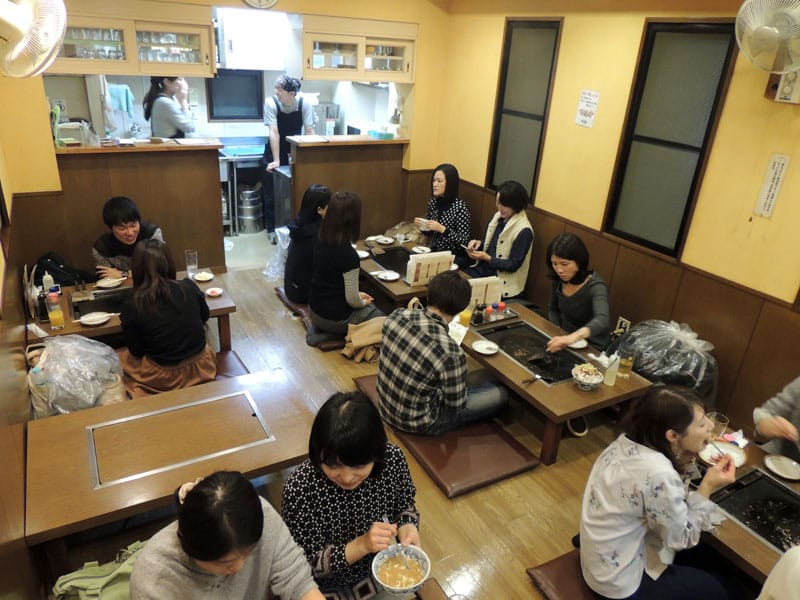
On our most recent visit we made our way down the central Showa Era arcade past gaggles of tourists and strolling couples before cutting down a dark alley to a less trafficked street. Here we found a pack of other monja devotees already queued, but breezed past them to claim the table we reserved earlier in the day.
Kondo Honten has the singular distinction of being Tokyo’s oldest monjayaki restaurant, and its reputation as the uncontested best has grown enough that it’s expanded into two neighboring three-story buildings and claimed every floor. Our assiduous hostess led us back outside and across the street to one such annex, and when the door opened we breeched a wall of heat and odor heavy with indeterminate spices coming off hot, black griddles at the center of every table.
Upon reaching our low table on the second floor, our hostess handed us a 20-gallon plastic bag before heading back down to usher more diners to their meals. Our coats went into the bag to save them from the restaurant’s overpowering scent (though the clothes on our backs would long be a reminder of the meal afterwards).
Monja shops distinguish themselves by the quality of their broth, and Kondo Honten adds curry powder and a hodgepodge of other spices for its own unique recipe. We ordered the shop special (squid, octopus, shrimp, beef, corn and noodles) to start and another with kimchi, mochi (rice cake), cheese and crispy wonton noodles to follow. The dishes came out fast, as the cooking happens at the table itself. Our waitress offered to cook them for us, but as practiced hands at making monjayaki we were happy to decline.
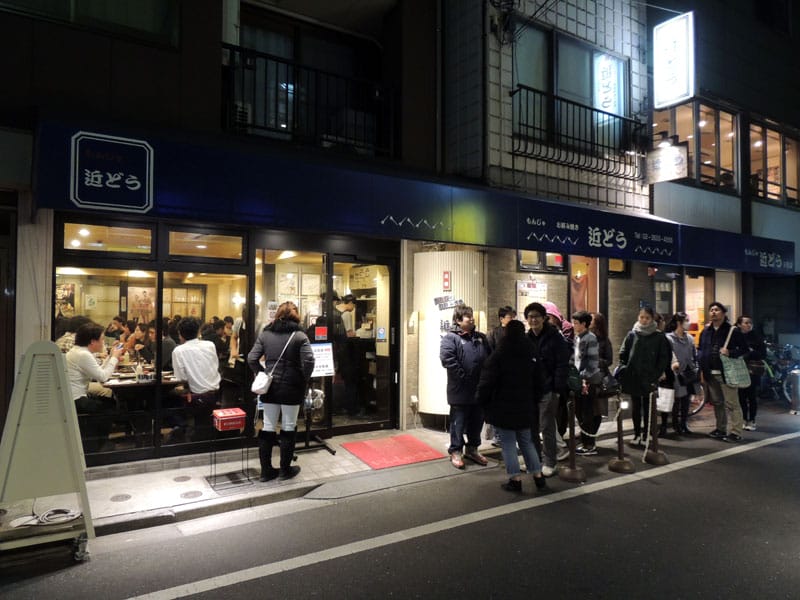
Cooking monja is an art unto itself. First, we used two large spatulas to form a ring with the secondary ingredients, the meat hissing on the grill, the mochi beginning to soften and melt. Once the ring was formed, we poured the thin batter into the middle of the ring so the wall of ingredients kept it from running. Next, we used a long spoon to stir the soupy batter into the wall of ingredients as it congealed. Soon everything became a pliable mass that we spread out evenly over the grill to finish. Finally, only minutes after ordering, we used smaller steel spatulas to scrape piping-hot monjayaki from the grill and into our mouths. The coagulated monja had the consistency of melted cheese, the smell of a hot grill and the taste of a home-cooked meal.
While not the most beautiful food to look at, monjayaki has a satisfying and familiar appeal. The notions of kitchen and dining space are collapsed in a monja restaurant. The diners become chefs, and friends become closer over the shared experience of preparing and eating a meal together. In every respect, it’s a feast that transcends its constituent parts to transform into something else entirely.
 November 2, 2018 Salumeria Upnea
November 2, 2018 Salumeria Upnea
The team behind Salumeria Upnea, a modern trattoria cum exhibition space in Naples, is […] Posted in Naples August 16, 2016 Pork Souvlaki in the Heart of Plaka
August 16, 2016 Pork Souvlaki in the Heart of Plaka
This delicious plate of pork souvlaki is from Paradosiako, an Athens favorite of ours in […] Posted in Athens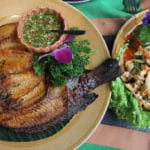 February 16, 2017 Gathering Clouds
February 16, 2017 Gathering Clouds
When “A Bite of China” came out in 2012, it took China – and the rest of the foodie […] Posted in Shanghai
Published on May 08, 2017
Related stories
November 2, 2018
NaplesThe team behind Salumeria Upnea, a modern trattoria cum exhibition space in Naples, is not exactly what you’d expect: Gennaro, Luigi, Stefano and Antonello, three pharmaceutical researchers and one lawyer, respectively, were deskbound at a pharmaceutical company not that long ago. Yet these four friends decided to risk everything for their two passions: photography and…
August 16, 2016
Athens | By Culinary Backstreets
AthensThis delicious plate of pork souvlaki is from Paradosiako, an Athens favorite of ours in the heart of Plaka. One may encounter such a delicacy on our walk through the area.
February 16, 2017
ShanghaiWhen “A Bite of China” came out in 2012, it took China – and the rest of the foodie world – by storm. The beautifully shot documentary showed Chinese culinary artisans around the country, watching them pull whole lotus roots from the mud in Zhejiang and make steamed buns from millet in Shanxi. Yunnan cuisine…







































